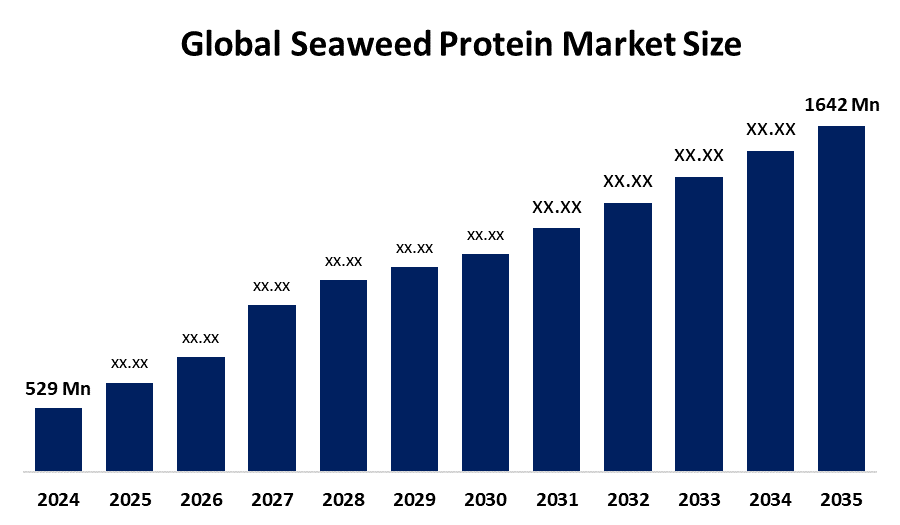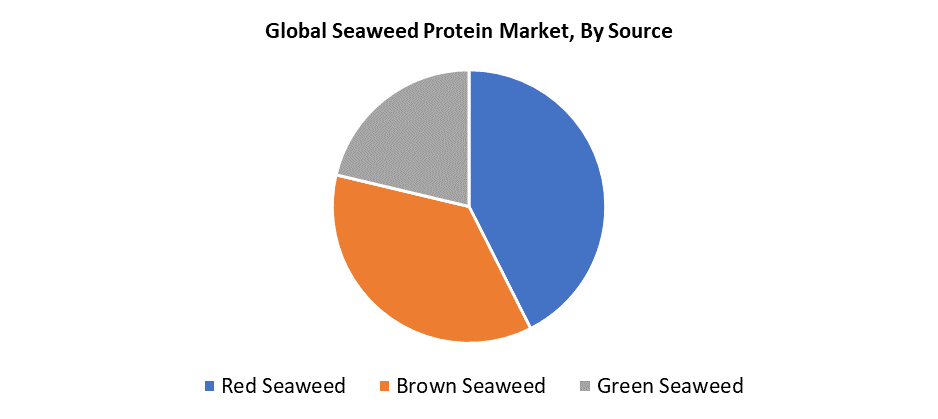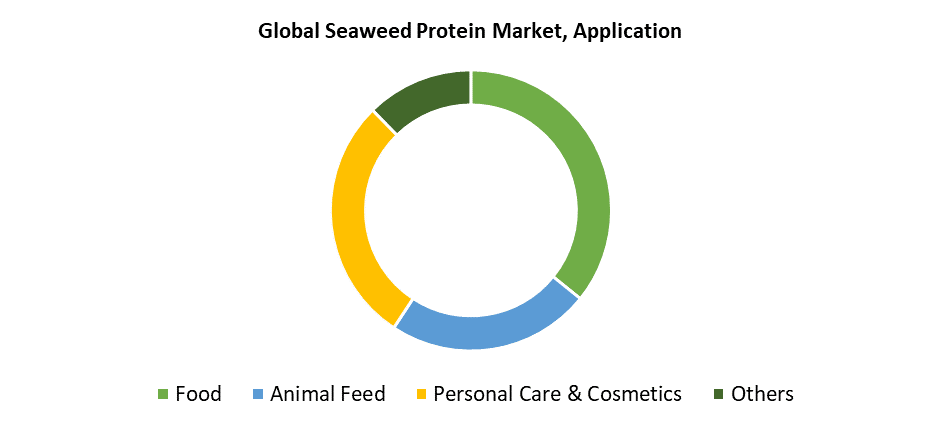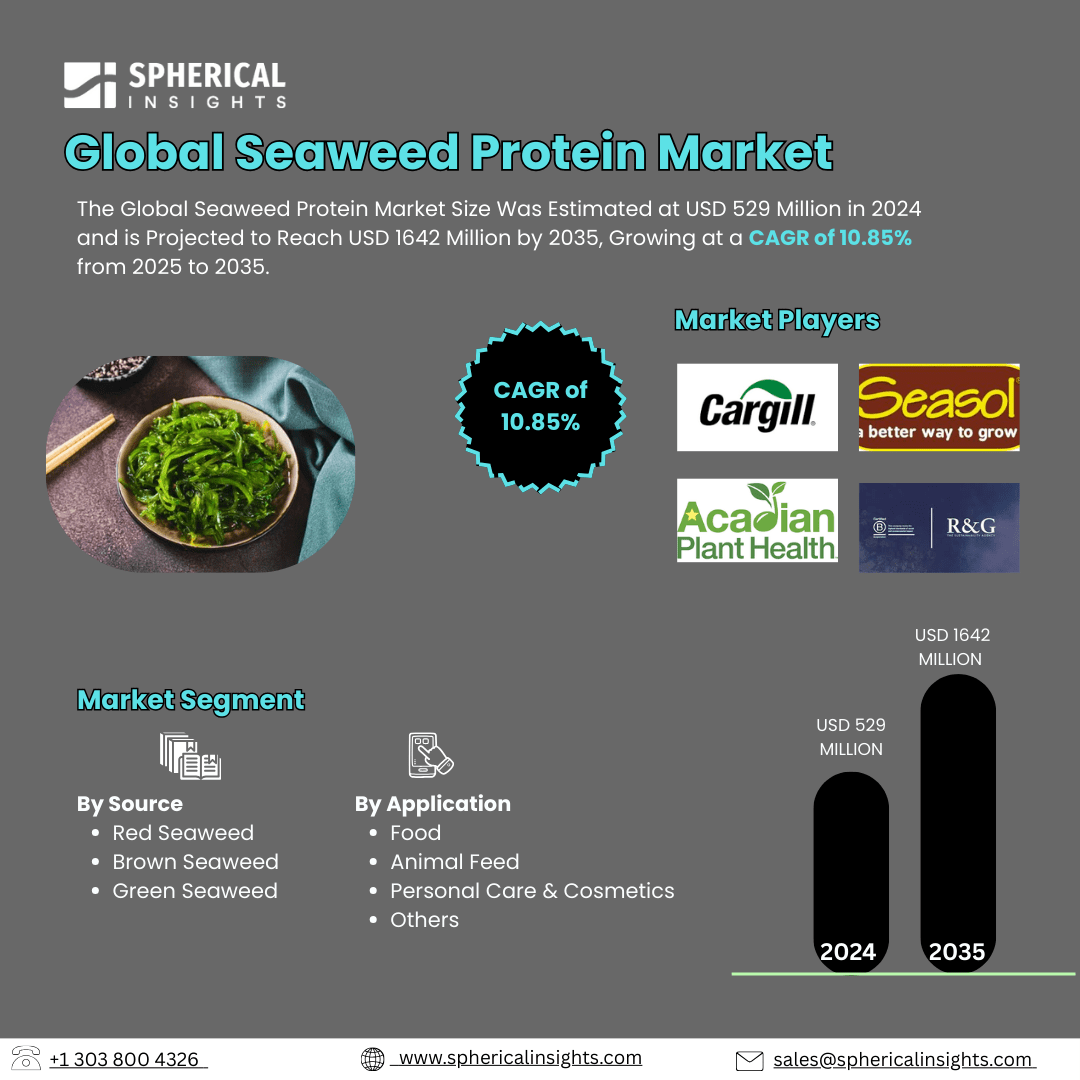Seaweed Protein Market Summary
The Global Seaweed Protein Market Size Was Estimated at USD 529 Million in 2024 and is Projected to Reach USD 1642 Million by 2035, Growing at a CAGR of 10.85% from 2025 to 2035. Several factors, including increased consumer demand for plant-based protein, expanding awareness of seaweed's nutritional benefits, and the growing adoption of sustainable food options, are driving the significant growth of the global seaweed protein market.
Key Regional and Segment-Wise Insights
- The Market Size for seaweed protein in North America was projected to reach USD 96 Million in 2024.
- In 2024, the Asia Pacific seaweed protein Market Size had the biggest revenue share, accounting for 60.37%.
- According to the source, the red seaweed protein segment accounted for over USD 237 Million in 2024, making it the most dominant market category.
- In terms of application, the seaweed protein market was dominated by the food application sector, valued at over USD 297 Million in 2024.
Global Market Forecast and Revenue Outlook
- 2024 Market Size: USD 529 Million
- 2035 Projected Market Size: USD 1642 Million
- CAGR (2025-2035): 10.85%
- Asia Pacific: Largest Market in 2024

The seaweed protein market focuses on manufacturing and selling protein derived from marine algae known as seaweed. The seaweed protein market is experiencing growth as people become increasingly aware of the importance of sustainability, as well as its connection to health and wellness. The rising popularity of vegan and vegetarian lifestyles has driven consumers to seek out protein sources that provide better nutrition than traditional animal-based options. Seaweed types kelp, nori, and wakame serve as highly nutritious options that contain important amino acids together with vitamins and minerals. Seaweed cultivation aligns with environmental values because it requires minimal freshwater and land resources and simultaneously improves ocean ecosystems through nutrient absorption. The environmental expenses of animal production exist as a complete opposite to this sustainable practice. The growing demand for clean-label, environmentally friendly diets has positioned seaweed protein as an appropriate choice, which attracts substantial industry investment.
The expansion of the seaweed protein market has been significantly driven by product diversification alongside technological breakthroughs. Advanced extraction and processing methods enable more efficient production of high-quality seaweed protein at affordable prices for current markets. The broad commercial adoption becomes more practical because of this development across food industries and cosmetic products, and animal feed production. Seaweed protein gains greater market acceptance through its multiple uses, which include serving as a sustainable feed for livestock and delivering antioxidant properties to beauty products. Multiple governments and research institutions, together with North American and European powers, now support sustainable aquaculture practices. Seaweed protein emerges as an adaptable protein alternative that addresses the rising population challenge of scalable food production systems.
Source Insights

Red seaweed segment dominates the seaweed protein market with revenue exceeding USD 237 million during 2024. The superior performance of red seaweeds, particularly Porphyra (nori), results from their high protein levels combined with essential amino acids, vitamins, fatty acids, and mineral content. The natural pigments phycocyanin and phycoerythrin in food compositions serve both aesthetic purposes and nutritional benefits. The umami taste and color of red seaweed make it an ideal choice for creating plant-based meat substitutes and functional dishes. The environmentally friendly and health-conscious customer base appears to be attracted to red seaweed because it grows through sustainable farming methods, which minimize freshwater and land usage. Traditional usage in Japan, Korea, and the United Kingdom sustains the ongoing expansion of this product segment across both food and non-food markets.
The market for brown seaweed protein segment is expected to grow at a CAGR of 9.7% from 2025 to 2035 because of its multiple uses and environmentally friendly properties. Brown seaweed like wakame and kelp can be cultivated without needing freshwater or arable land to create a sustainable and scalable protein source. The solution aligns with worldwide environmental goals through its role in ocean acidification mitigation and carbon storage. The nutritional content of this product includes high levels of vitamins together with minerals, proteins, and essential amino acids. Food applications, together with cosmetics, pharmaceuticals, and animal feed, utilize its natural components, alginate and fucoxanthin, for their antioxidant properties and functional benefits. The brown seaweed market is growing because it offers a flexible, sustainable protein source to meet increasing demand for clean-label ingredients, and substantial research and development funding.
Application Insights

The food application sector held the leading position in the seaweed protein market with a market value exceeding USD 297 million during 2024. The main factors driving this market expansion include rising health awareness and worldwide shift to plant-based diets that demand sustainable nutrient-rich protein alternatives to animal products. Seaweed protein stands as a preferred choice because it provides a broad spectrum of amino acids together with high levels of vitamins, minerals, and antioxidants. The natural origin of seaweed protein aligns perfectly with clean-label trends because consumers prefer minimally processed foods with recognizable ingredients. The environmental advantages of seaweed farming make it a better option because this practice needs no freshwater and no arable land for its cultivation. The market expansion of this category is boosted by the widespread use of seaweed-derived hydrocolloids such as carrageenan agar and alginate, which provide gelling and stabilizing functions particularly in plant-based food products.
During the projected timeframe, the seaweed protein personal care and cosmetics market will grow at a 10.5% CAGR because of increasing consumer interest in sustainable, natural, and efficient skincare products. Seaweed proteins contain amino acids, peptides, polysaccharides, and antioxidants that deliver strong moisturizing properties alongside anti-aging benefits and calming effects. The bioactive components within these products serve perfectly for creams, serums, and masks because they stimulate collagen formation and protect against oxidative damage while maintaining skin hydration. Their broad range of benefits, including skin whitening along with UV protection and detoxification properties, drives their rising market demand. Enzyme inhibitors function to manage pigmentation while seaweed compounds such as mycosporine-like amino acids provide natural sun protection to enhance their value in multiple cosmetic formulations.
Regional Insights
The North American market for seaweed protein had experienced substantial growth in 2024, valued at USD 96 million, because consumers increasingly seek plant-based protein alternatives to conventional animal products. The demand for protein alternatives with high nutritional value has grown because people are adopting more vegan and vegetarian eating patterns. The natural composition and minimal processing of seaweed protein meet consumer needs while supporting clean-label product trends. The substance contains essential amino acids alongside vitamins and minerals. The functional qualities of this product make it valuable for food and beverage applications because it enhances texture and shelf life. The U.S. leads the regional market because it has developed advanced methods for producing and processing algae. The regional market expansion results from rising consumer demand for environmentally friendly products together with the growing popularity of functional foods.
Asia Pacific Seaweed Protein Market Trends
The Asia Pacific seaweed protein market held the largest revenue share, accounting for 60.37% in 2024 due to strong production infrastructure and traditional cultural consumption. The culinary traditions of China, Japan, and South Korea have incorporated seaweed for centuries, resulting in consistent market demand and widespread consumption. The region possesses substantial agricultural production capacity and state-of-the-art aquaculture systems, which enable efficient and sustainable seaweed production. The fast commercialization of seaweed protein in culinary and nutraceutical sectors, along with cosmetic and aquaculture industries, drives its expanding utilization. The growth of this market receives additional momentum from supportive government rules alongside foodservice sector expansion and rising consumer interest in plant-based personal care items. Asia remains the leading world force in algae production, which solidifies its status as the leading market and exporter of seaweed-derived products across multiple industries.
Key Seaweed Protein Companies:
The following are the leading companies in the seaweed protein market. These companies collectively hold the largest market share and dictate industry trends.
- Cargill, Incorporated
- Seasol
- Acadian Seaplants Limited
- R&G Strategic Inc.
- Gelymar SA
- Algaia S.A.
- CP Kelco U.S., Inc.
- Qingdao Gather Great Ocean Algae Industry Group
- Irish Seaweed Company
- Compo Expert GmbH
- DuPont Nutrition & Biosciences
- Maxicrop
- Chase Organics
- Qingdao Brightmoon Seaweed Co. Ltd.
- BioAtlantis Ltd.
- Others
Recent Developments
- In March 2023, the JRS Group, a prominent producer of functional substances derived from plant-based raw materials, announced the purchase of Algaia SA, a manufacturer and expert in hydrocolloids and seaweed extracts made responsibly.
Market Segment
This study forecasts revenue at global, regional, and country levels from 2020 to 2035. Spherical Insights has segmented the seaweed protein market based on the below-mentioned segments:
Global Seaweed Protein Market, By Source
- Red Seaweed
- Brown Seaweed
- Green Seaweed
Global Seaweed Protein Market, By Application
- Food
- Animal Feed
- Personal Care & Cosmetics
- Others
Global Seaweed Protein Market, By Regional Analysis
- North America
- Europe
- Germany
- UK
- France
- Italy
- Spain
- Russia
- Rest of Europe
- Asia Pacific
- China
- Japan
- India
- South Korea
- Australia
- Rest of Asia Pacific
- South America
- Brazil
- Argentina
- Rest of South America
- Middle East & Africa
- UAE
- Saudi Arabia
- Qatar
- South Africa
- Rest of the Middle East & Africa






